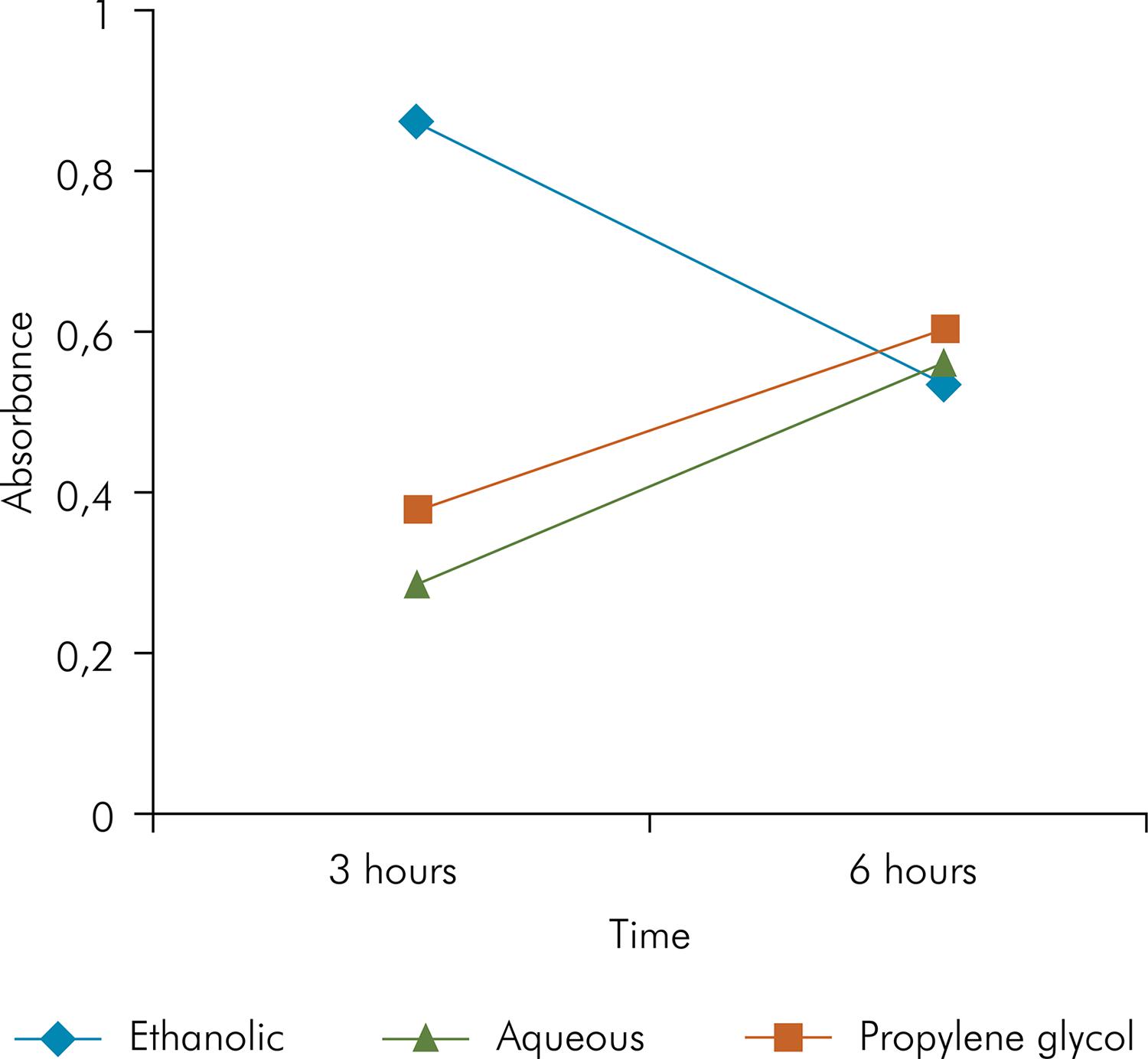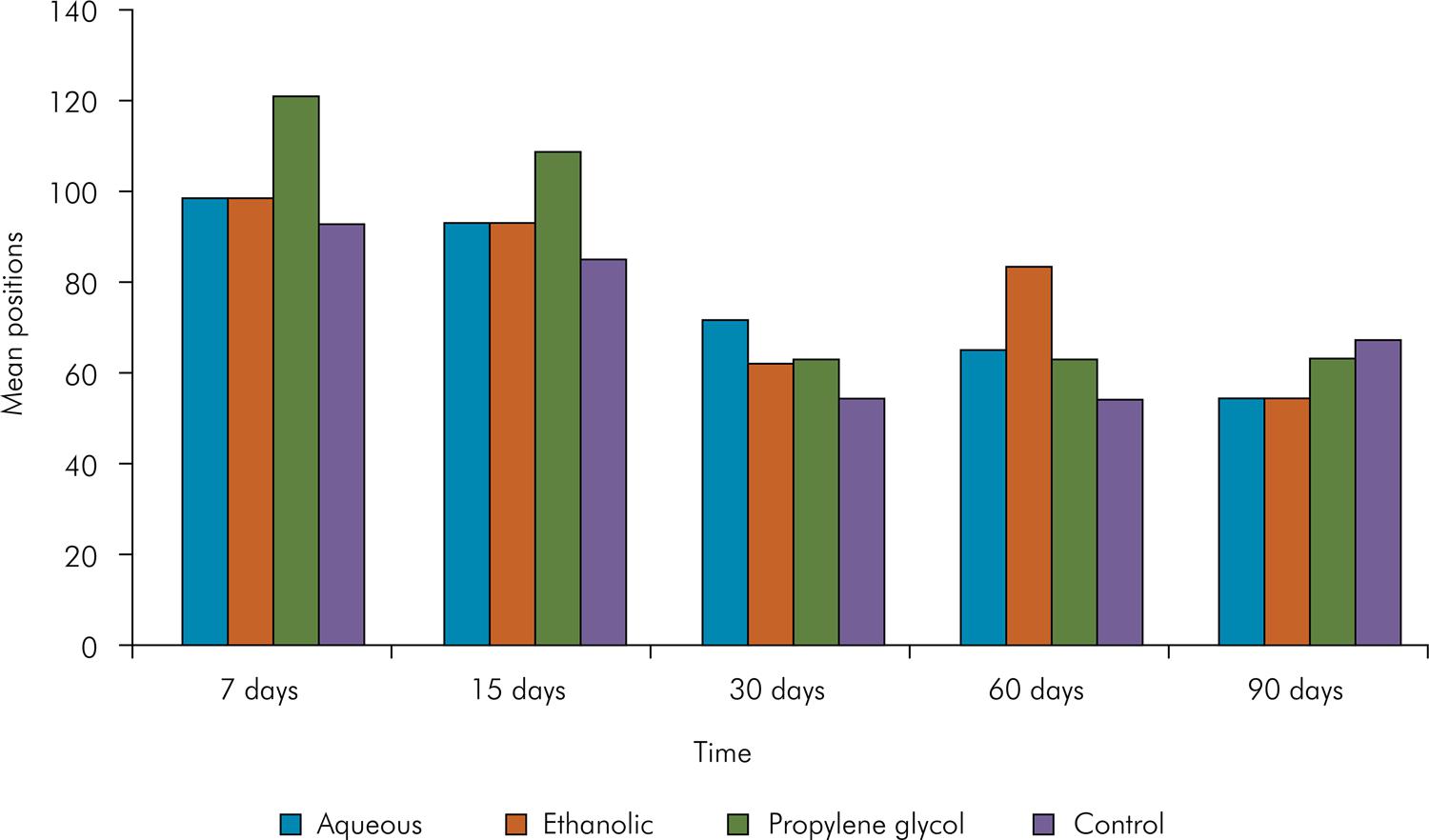Abstract
The aim of this study was to evaluate edemogenic activity and subcutaneous inflammatory reaction induced by Psidium cattleianum leaf extracts associated with Ca(OH)2. Thirty male Wistar rats, split equally into three groups [aqueous extract + Ca(OH)2; ethanolic extract + Ca(OH)2; and propylene glycol + Ca(OH)2], were assessed every 3 h or 6 h (five animals in each period). Under general anesthesia, 0.2 mL of 1% Evans blue per 100 g of body weight was injected into the penile vein and each combination to be evaluated was subcutaneously injected into the dorsal region 30 min thereafter. Edemogenic activity was analyzed by spectrophotometry (λ=630 nm). For inflammatory reaction analysis, 50 rats received four polyethylene tubes (three experimental groups) and an empty tube (control group). The assessments were made at 7, 15, 30, 60, and 90 days, followed by hematoxylin-eosin staining and by the assignment of scores for evaluation of tissue response intensity. Ethanolic extract + Ca(OH)2 yielded the largest edemogenic activity at 3 h. Intergroup differences at 6 h were not significant. The histological analysis showed progressive repair over time (p<0.05) and aqueous and ethanolic extracts produced similar responses to those of the control and Ca(OH)2 + propylene glycol groups. Psidium cattleianum leaf extracts used as Ca(OH)2 vehicles evoked similar tissue response when compared to Ca(OH)2 associated with propylene glycol.
Inflammation; Edema; Plants; Medicinal; Plant Extracts



